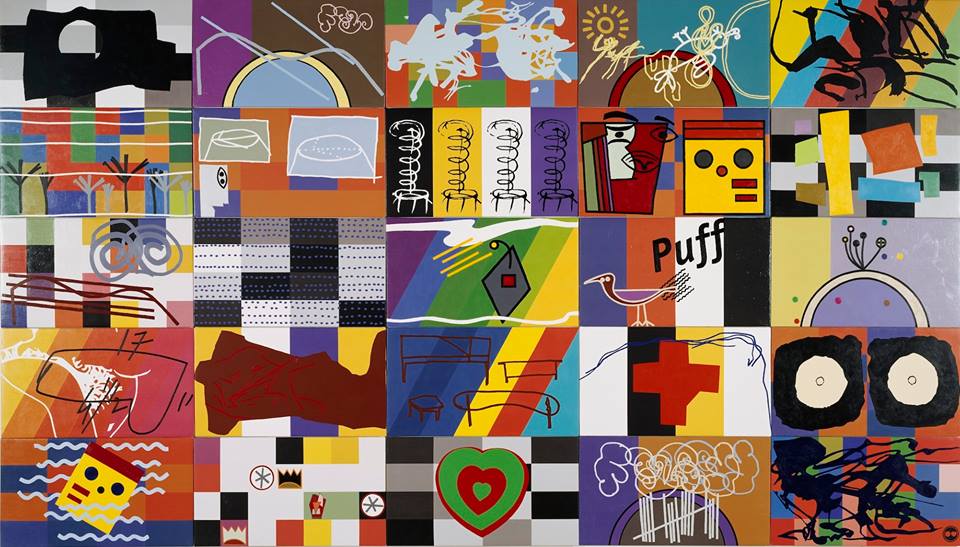AUTHOR: IVO MARTINS
EDITION: (Catalogue) Centro Cultural Vila Flor DATE: April 2013
Among the artists of the generation that burst onto the 1980s art scene in Portugal, Pedro Portugal is perhaps the
one whose work, despite being widely recognised both critically and institutionally, is relatively undocumented
and analysed. Hence, the main purpose of this exhibition is to help dispel this paradox and attempt to fill an
important void. This necessarily incomplete project, that doesn’t rely on a retrospective structure, aims to create
processes providing guidance and interpretation within a multifaceted body of work, avoiding the easy option of
resorting to chronological sequences and narrative linearity, by offering a more porous and interpretive visual
contact among the range of works that shape a rich symbolist cartography.
A broad and comprehensive appraisal of the artistic path of Pedro Portugal reveals two predominant traits.
Firstly, one can detect a playful, ironic dimension, a common denominator among the artists who, along with
him, founded the “Homeostético” movement, where irony and humour are strategies of critical action with
iconoclastic and subversive intentions as part of an urgent drive to question cultural codes that are deemed
hackneyed and no longer worthy of inclusion in the current societal and political corpus. Scepticism is the best
approach for understanding the second major trait of Pedro Portugal’s crucial discursive content. In the artist’s
work, recourse to game-play and to the comic element unfolds in a constant allusion to signs and symbols,
incessantly circularity between visuality and language, representation and meaning. These processes of
interpretive relativity and circularity, constantly in play behind the work, grant it great visual mobility and open
it up to the possibility of an almost total freedom of movements - the symbol gives it the power to simultaneously
open up and close itself off to context in a single gesture, thus allowing it to take two different directions at the
same time. This nomadism between concept and form, between signifier and signified, marks the artist’s unity of
work and is visible on both a conceptual and a formal level, ergo the profuse diversity of media tried out - from
painting (which probably takes a predominant role) to sculpture, installation, design, performance, video art and
interactive digital art.
In this work, regardless of its form of expression, everything is dealt and interlinked in an intuitive relationship
(and not a dialectic one) between stimulus and response to a cultural and social context over coded with symbols
and meaning structures. The artist’s strategies are the deconstruction, derailing, quotation, manipulation and
even the sabotage of these narratives that are products of the instances of (a) culturalisation of power in all of its
declensions and incarnations, focussing on how they enter and permeate cognitive processes of knowledge
acquisition and awareness shaping. In these works, language as a basis for perception therefore takes on a
fundamental position and it is from this (or from one of its many corresponding configurations in the sphere of
what can be deemed artistic) that the driving force of the artistic impulse is organized. If Pedro Portugal’s
pictorial component, when materializing this creative impulse, is so strong and undeniable, featuring in his
sculptures and installations as well as his paintings, this is because the artist assumes from the outset that the
organization of narratives, which nowadays are more fragmented and composited than ever (perhaps the reason
why the artist erects interactive panels, repeating the images found in his paintings, developing new perspectives
in mobile representations, recreating standalone pictures assembled in a group open to being recomposed and
reconfigured), can be shattered into a thousand pieces and take multiple paths that irremediably converge
towards the same meaning-sucking core, towards a vortex that is the sign - even when it is off-centre and
deterritorialized, abstracted and geometrized, stylized and brought to a place of pure representation, where it
feasibly finds its primordial purport.
TRANSLATION: WENDY GRAÇA

